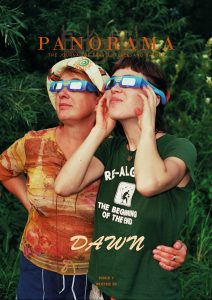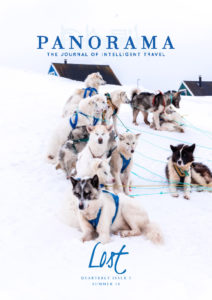The curtains flowed rhythmically in and out with the wail of the siren. Different from the wide-open view of the rescue helicopter, the ambulance felt closed in, shuttered. Shuttered like it might haul me off to where I’d never be heard from again. Swaying back and forth, my bladder micro bursts with each road bump and I launch urine onto the stretcher. The ambulance attendant, a talkative soul, can’t seem to get the oxygen flowing so we put the prongs up my nose and pretend. He wants to ask many questions but Ngima Sherpa, my Nepali guardian angel, begs him to be quiet, suggesting we just get there. I grasp the side rails of the stretcher and pray that I can get back to Everest.
We arrive at the hospital and I am transferred to a small cubicle bounded by more curtains and concrete pillars. A soft and hard world so different from the one I just came from. There is a heart monitor beeping to my right and a young man with a broken arm writhing to my left. We are all joined in the circumstances that brought us together this Saturday morning. Just two hours previously, I was an Everest climber rather than emergency room patient.
I sat glumly on someone’s pack. Altitude medication ordered by unseen doctors below and administered by teammates. Oxygen mask strapped to my face. I’m sinking deeply into myself but secretly hoping the clouds will thicken instead of dissipate. I didn’t want to go to Kathmandu. Only over the Khumbu icefall. My safety was being lorded over me like a battle axe forcing me to yield into agreeing. I was to be flown off Everest. A first for me. To be evacuated. From anywhere. My dream crashing to the ground like shards of ice launched regularly by the icefall below. The dreaded icefall. It is what stopped my pedestrian descent out of concern for my teammates.
Down was OK. Up was not. After reaching the expedition high spot of 7,200 metres, I knew it was time to go down. I felt unwell. Like someone had taken my stuffing. Like a well-loved and chewed dog toy, devoid of its middle. Energy gone. Thank goodness for gravity as I teetered down the Western Cwm, feeling drunk but hoping to pass as sober. I gave up my backpack to Ngima. First time ever to give up my pack and not carry my own weight.
When you turn your back on Everest, the universe yaws at your feet and you know you are a speck. A small speck on the hair of the dog that stole your stuffing. The dog days of altitude where you starve for air and nourishment but climb anyway because Chomolungma calls and you can’t help but answer.
Down was going. I was making it. Under my own power. Until the crevasses above Camp One. Deep white canyons marking the line between me and basecamp. Down one side. Up. Sort of. The Other. Slow to almost not moving. I apologise to those behind me and try to find strength to climb the next. If these relatively small cracks are all but stopping me, how will I manage the technical and sharp, icy terrain just below? In the icefall, the place where most people have died on this mountain. A place we were ordered to traverse alone in order that our Sherpas don’t have to go slow with us. But I can’t go alone just now. Altitude has robbed me of my ability to go any direction but down.
We confer. We call to those below. Suddenly, things accelerate out of my control. Out of our control. Those at base camp are now making the decisions. They pretend to consult but in the guise of definitive care, they’ve called a bird. A mechanical bird. Advances in bird technology make it possible for them to reach me and pluck me from my mountain nest. I pray for clouds. I don’t want to go. I don’t want to leave. I want to hitch hike down on the helicopter, get some medication, heal, and go back up. Instead, the door of the helicopter is slammed on my dreams and I sit, slumped in the back, not even a seat belt to keep me in place. I dream of reaching over and opening the door and plunging into the depths of the icy waves below.
The bird has glass, even down where I am slouched. Around my oxygen mask, I look and see us rising above Everest. My mind shatters into two, one part holding onto the sadness and grief of what is unfolding and part dancing with the goraks that fly beside us. The ubiquitous black birds that we see everywhere in both basecamp and over the summit are flying beside the helicopter in formation. They rise and fall on unseen currents and direct my attention to the wonder of flight, even if that flight is taking me down, down further than I want to go, away from the mountain I love. Weeks to climb up and moments to descend this way. I am safely insulated from the towers of ice below. We skim down over them. I beg the universe to put me down, to let me walk, but instead we plunge over the terrifying icy terrain.
The icefall is ten thousand icebergs piled on top of each other, forming a river of ice. The most dreaded obstacle in mountaineering. If it were anywhere else than Everest, no one would climb through it. The only way is through. Ideally moving fast. Don’t be in the wrong place at the wrong time. But how would you know when and where that is?
It’s climbing up in the dark and down in the light. Except by me because I am flying over it with eight Discovery Channel cameras pointed at me capturing my crushed spirit, my sadness, and emerging small inklings of fascination at being above, of looking down at Everest with wonder, of marvelling at the cacophony of ice from the relative safely of the gorak’s view. Above. Soaring. With grace even as my world is tumbling faster than Khumbu ice. I should be scared. Helicopters aren’t meant to fly really. It’s magic. Much like this view of this mountain I’ve come down so many times, just not like this.
It’s too fast. My umbilical connection with Sagarmatha is stretched and then sliced by the speed. I’m ruptured by the quick descent and change from thin to thick air, mountain to city, ice to heat. I’m on a tight wire of flight between known and unknown, duality and dichotomy, safety and danger. I’m all of these and none. Climbing Everest is slow. The thin air demands it. Each step up requires concentration and breath in sync with step. For days, we climb, one breath, one step, one mantra. The natural order is broken by this bird’s speed. I’m down before I’m ready. I’m reeling in the beauty of what I am seeing as the mountain skirts by, or more aptly, as I skirt by the mountain.
Through my stupor, I tell my mind to record. The brilliant shine of the white. The blue. The blue. The blue of sky that radiates through everything on Everest. The deep black rocks. The tiny dots of climbers making way, the usual way, by foot, slow, step by step. Not flung from heights by the power of doctors and machinery. The Sherpa we pick up at basecamp smiles reassuringly and holds my oxygen tank. I choke back my tears at his kindness. I don’t want to break down and miss anything as I ride this rollercoaster between the end of my decade’s dream and the almost seismic waved glacier below. I’m flying the Khumbu. “I’m flying the Khumbu,” my mind screams in joy when unfettered by grief. I’ve walked this valley up and down and up and down, never dreaming I would see it like this.
Rivulets beget rivers beget waterfalls and valleys drop away beneath us. An eight-day walk is reduced to a 30-minute flight. Memories condensed. Like morning dew wiped away so you can sit and not get your bottom wet at the picnic table. I too, am swept away-leaving others to deal with me, further away and down. I’m left with a gaping hole in my heart where the cord pulled away. Usually the cord is gently stretched as I walk downhill for days allowing me to ease out. This time though, for the first time, it’s ripped from me rapidly and I’m left alone in the chaotic city trying to sew my heart back together with thin strands of memories past.











